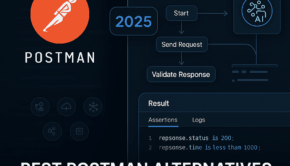Top 10 Web Development Trends To Look Out For In 2021
Internet-based technologies are ever-evolving, with new trends and tools making websites increasingly interactive and dynamic. Browsers have also changed a lot in recent years, which makes cross-browser compatibility crucial. Here are the biggest trends to consider when developing a site in any niche.

Dark Mode UX
The dark mode is increasingly popular, as it reduces eye strain when websites are opened on mobile devices. It also lightens the battery consumption and gives the app or site a stylish UX. This is one of the most prominent aesthetic upgrades considered by developers like appkong.com, and it has already been adopted by tech giants like Google and Facebook.
Voice UI
The emergence of smart speakers like Alexa has spurred robust growth of voice recognition technologies in recent years. Now, a speaker with AI functionality may cost just $50, while all smartphones are equipped with a voice feature — Google Assistant or Siri. This poses a new challenge for web developers — creating sites accessible to users who prefer to use voice-over typing, not just for sight-impaired and hearing-impaired audiences.
The new technologies have revolutionized the way consumers search online. By the end of 2021, the market for AI-driven speakers is expected to grow to a whopping 163 million units. Almost half of the users already perform voice-based searches online, according to Adobe Analytics. Optimizing a website for voice search is crucial.
Progressive Web Applications (PWAs)
These apps stand out due to their faster loading, smooth performance, and linear UX. While the concept is not new, it is poised to dominate web development this year. It allows businesses to succeed without a native smartphone application. Combined with modern APIs, PWAs deliver an enhanced experience using a single code base. They make access from any device and any location easy. Users can even explore the content offline thanks to the features of a native app.
AR and VR
With the rise of virtual and augmented reality in websites, developers are now able to provide a mixed reality experience. This industry is projected to grow to nearly 10 billion dollars by 2024. Industries like retail, tourism, and architecture allow consumers to don their VR devices, from Google Cardboard to Oculus Rift, to inspect the services or products in the simulated environment. Meanwhile, employees who work from home can visit virtual meeting rooms and interact with coworkers remotely thanks to services like Spatial.
AR and VR do not only work on apps. Thanks to WebAR technology, even web browsers can deliver an immersive experience. While cross-browser performance needs more work, the technologies will be perfected with time.
Mobile-First Development
According to the latest research, around 74% of customers who visit your site will come back if it is optimized for mobile use. This is crucial for retention and loyalty. As the modern consumer is used to ordering products and services on the go, mobile access is at the heart of web development. Companies must plan how their websites will work on desktop and mobile devices.
Since May 2021, Google has regarded page experience as a ranking factor for search (Core Web Vitals update). This highlights the importance of mobile-first development for companies in any industry. Moreover, mobile websites must be tested for different devices and platforms to ensure a seamless experience for all users.

AI-Powered Chatbots
AI allows chatbots to imitate human conversations based on machine learning and deep learning. In segments like healthcare, retail, and banking, chatbots help companies save a lot — according to Juniper Research, $11 billion by 2023. Chatbots reply to queries instantly, which decreases the drop-off rates. They can also solve problems faster thanks to speech recognition and cognitive intelligence.
Still, they are unlikely to completely replace people, as consumers want to interact with employees who can understand their problems on another level. Hence, AI chatbots are an integral part of hybrid strategies.
Cloud-Based Automation Testing
Web development requires meticulous testing and validation for different browsers, as different users access sites from different systems. Currently, Chrome is the leader, but 36% of consumers prefer its rivals. Every browser renders web pages differently. The testing cycles might also be quick, as businesses need fast Time To Market (TTM).
These problems are solved by implementing automation testing on the cloud. Popular frameworks like Selenium developers run and scale their tests across browsers. This accelerates testing while enhancing its coverage.
More Emphasis on Cybersecurity
As online technologies are evolving at breakneck speed, the risk of cyber threats is also growing. In the first quarter of 2020, DDoS attacks rose steadily, showing a 248% increase compared to 12 months before. Consumers expect companies to protect their data and funds.
As a result, websites from the banking, retail, and health sectors are devoting more attention to security than before. HTTPS is an absolute must, as Google marks sites without it as dangerous. Investment in suitable SSL certificates is absolutely vital. Any website with a customer base must abide by the new standards and perform frequent audits to ensure compliance.
No Code/ Low Code
These opportunities provide companies with an easier way to build tech products with a low learning curve. The coronavirus has become the catalyst for the development of these technologies. Zero code platforms are not only useful for people without technical acumen. They also allow developers to create the initial phase and scale it up faster and more cheaply. Experts predict that over half of app development by 2024 will be based on low code platforms.
Motion UI – Making Websites Smoother
While PWAs have ushered in the app-less revolution, motion UI drives the growth of interaction. It allows developers to integrate dynamic elements like animations, scrolling, backgrounds, and hovers into a web page to make it more fun and engaging. Not only can they make the page content and structure smoother by eliminating heavy elements and gradients. They can highlight essential elements like CTAs and provide a superior browsing experience for the user.











![The ePrivacy Regulation and Its Impacts [Infographic]](https://technofaq.org/wp-content/uploads/2019/06/cropped-150x150.jpg)




